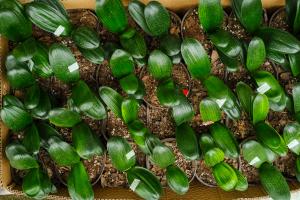Introduction
The water hyacinth is an aquatic plant that is widely distributed across the world. The plant is known for its ability to grow rapidly and form dense mats on the surface of water bodies. Water hyacinth poses a significant threat to aquatic biodiversity and is considered a noxious weed in many countries. In this article, we will discuss what type of plant water hyacinth is.
Scientific Classification
Water hyacinth belongs to the family Pontederiaceae, which consists of freshwater plants. Its scientific name is Eichhornia crassipes. It was first described by the German botanist Carl Friedrich Philipp von Martius in 1824. The genus Eichhornia has only one species, which is the water hyacinth.
Physical Characteristics
Water hyacinth has thick green leaves that are glossy and waxy to the touch. The leaves are arranged in a rosette pattern and are attached to long spongy stalks. The plant produces beautiful lavender-blue flowers with a yellow spot on the uppermost petal. The flowers are arranged in a cluster and float on the surface of the water. The plant's roots are feathery and hang in the water column.
Habitat and Distribution
The water hyacinth is native to South America but has been introduced to many countries around the world. The plant thrives in warm, still, and slow-moving water bodies such as ponds, lakes, and rivers. It can tolerate a wide range of pH levels and can grow in water depths of up to 5 meters. Water hyacinth is capable of forming dense mats that can cover the entire surface of the water body, limiting sunlight penetration, and hindering the gas exchange process essential for aquatic life.
Ecological Impact
Water hyacinth is considered a noxious weed and has significant ecological impacts on the aquatic environments it invades. The dense mats formed by the plant restrict sunlight penetration and reduce oxygen levels, leading to the death of fish and other aquatic organisms. The plant also alters the natural flow of water, increasing the risk of flooding and soil erosion. In addition, water hyacinth serves as a breeding ground for disease-carrying mosquitoes, posing public health concerns.
Uses
Although water hyacinth is considered a pest, it has several practical uses. The plant is an excellent bioindicator of water quality and can absorb pollutants from water bodies, improving water quality. Water hyacinth is also used in the treatment of wastewater in constructed wetlands, where the plant's extensive root system aids in the removal of nutrients and other contaminants. The plant is also used to make baskets, mats, and organic fertilizers.
Conclusion
Water hyacinth is a fascinating plant with both positive and negative impacts on the environment. While it possesses some beneficial uses, its invasive nature has led to significant ecological and economic damage in many countries. Proper management strategies are, therefore, necessary to control its spread and minimize its adverse effects on the environment.

 how many times do yo...
how many times do yo... how many planted tre...
how many planted tre... how many pine trees ...
how many pine trees ... how many pecan trees...
how many pecan trees... how many plants comp...
how many plants comp... how many plants can ...
how many plants can ... how many plants and ...
how many plants and ... how many pepper plan...
how many pepper plan...





























